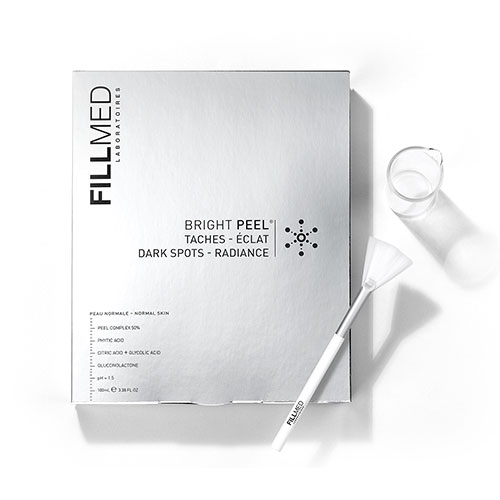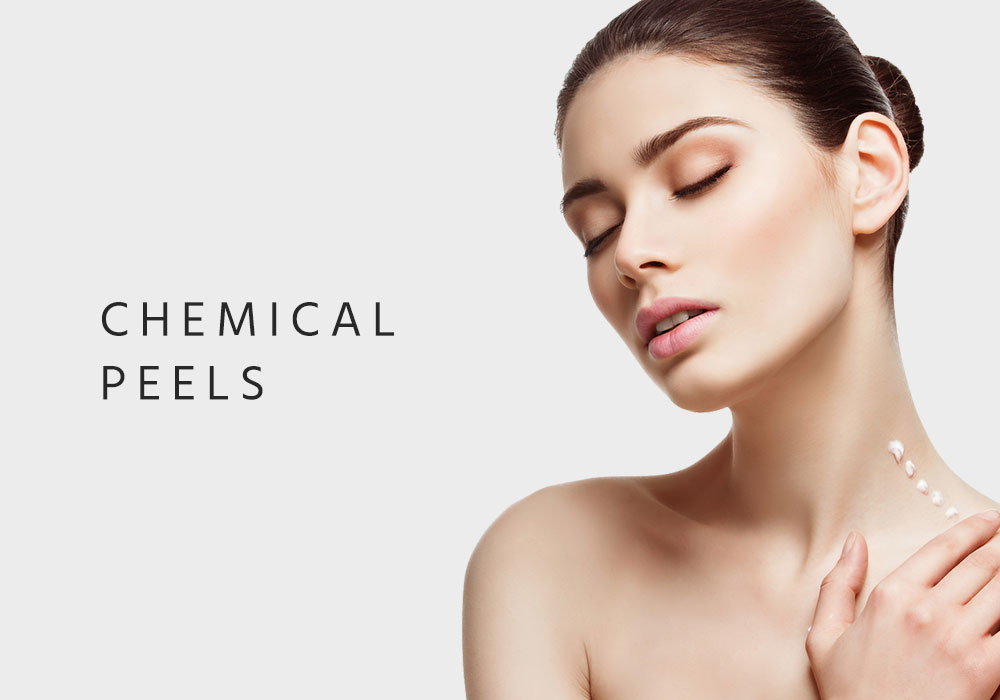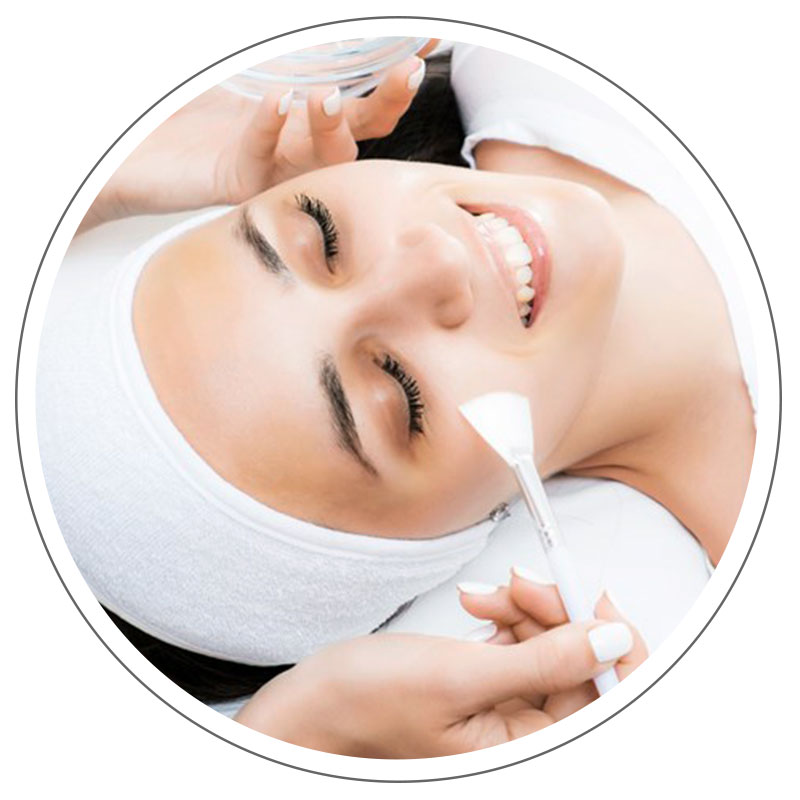
What Is Chemical Peels
EFFECTIVE FOR – Skin texture, dilated pores, complexion, redness and fine linesThe practitioner can dose the percentage of glycolic acid, depending on the state and needs of the skin. The peel treatment can also be combined with sessions of mesotherapy.
WHERE IT WORKS BEST – Face, neck, neckline, the hands
FAQs for Chemical Peels
1. What is a Chemical Peel?
A chemical peel is a cosmetic treatment that involves the application of a chemical solution to the skin, causing the top layers to exfoliate and eventually peel off. The new, regenerated skin is usually smoother, less wrinkled, and more even in color.
2. How do Chemical Peels work?
Chemical peels work by applying an acid solution to the skin, which dissolves the bonds that hold dead skin cells together. This process exfoliates the outer layers of the skin, stimulating cell turnover and collagen production. As the treated skin peels off, new, healthier skin emerges.
3. What types of Chemical Peels are available?
- Superficial Peels: Use mild acids like alpha-hydroxy acids (AHAs) or beta-hydroxy acids (BHAs) to gently exfoliate the outer layer of skin. Suitable for mild skin issues and maintenance.
- Medium Peels: Use stronger acids like glycolic acid or trichloroacetic acid (TCA) to reach the middle layers of skin, treating issues like fine lines, wrinkles, and moderate pigmentation.
- Deep Peels: Use powerful acids like phenol to penetrate deeper layers of skin, addressing severe wrinkles, deep scars, and extensive sun damage. Deep peels require longer recovery times.
4. What skin concerns can Chemical Peels treat?
- Fine lines and wrinkles
- Sun damage and pigmentation
- Acne and acne scars
- Age spots and melasma
- Uneven skin tone and texture
- Enlarged pores
5. Are Chemical Peels safe?
Yes, chemical peels are generally safe when performed by a trained and experienced practitioner. However, it is important to have a thorough consultation to ensure the treatment is suitable for your skin type and condition.
6. What can I expect during the treatment?
- Consultation: A consultation with a qualified practitioner to assess your skin concerns and determine the appropriate type and strength of peel.
- Preparation: The skin is cleaned, and eye protection may be applied. A pre-peel solution might be used to prepare the skin.
- Application: The chemical solution is applied to the skin. You may feel a tingling or burning sensation as the acid works.
- Neutralization: For some peels, the solution is neutralized after a specific time, while others are self-neutralizing.
- Post-Treatment Care: A soothing ointment or sunscreen is applied, and specific aftercare instructions are provided.
7. Is there any downtime after a Chemical Peel?
- Superficial Peels: Minimal downtime. Mild redness and flaking may occur for a few days.
- Medium Peels: Moderate downtime. Redness, swelling, and peeling can last up to a week.
- Deep Peels: Significant downtime. Redness, swelling, and peeling can last several weeks, with full recovery taking months.
8. How many treatments are needed?
The number of treatments required depends on the skin concern being treated and the type of peel used. Superficial peels may be repeated every few weeks, while medium and deep peels are usually done less frequently. A series of treatments is often recommended for optimal results.
9. When will I see results?
Results from chemical peels can vary based on the type of peel and individual skin response. Initial improvements in skin texture and tone may be seen within a week, with continued improvement over several weeks as the skin heals and regenerates.
10. Are there any side effects?
Side effects are generally mild and temporary, including redness, swelling, flaking, and peeling. Rarely, more severe side effects such as infection, scarring, or changes in skin pigmentation can occur, especially with deeper peels.
11. Who is a good candidate for Chemical Peels?
Good candidates for chemical peels are individuals looking to improve specific skin concerns such as aging, pigmentation, acne, and texture issues. A consultation with a qualified practitioner is necessary to determine suitability based on skin type and condition.
12. How do I prepare for a Chemical Peel?
Preparation typically involves:
- Avoiding sun exposure and tanning for a few weeks before the procedure.
- Discontinuing the use of certain skincare products, such as retinoids and exfoliants, a few days before the treatment.
- Following any specific instructions provided by your practitioner.
13. How do I care for my skin after the treatment?
Post-treatment care involves:
- Keeping the skin clean and moisturized.
- Avoiding direct sun exposure and using a broad-spectrum sunscreen.
- Avoiding picking or peeling the skin.
- Following any specific aftercare instructions provided by your practitioner.
14. Can Chemical Peels be combined with other treatments?
Yes, chemical peels can be combined with other cosmetic treatments such as microneedling, laser treatments, and dermal fillers to enhance overall results. It's best to consult with your practitioner to develop a personalized treatment plan.
For personalized advice and to determine if a chemical peel is right for you, it's best to consult with a qualified dermatologist or aesthetic professional.





